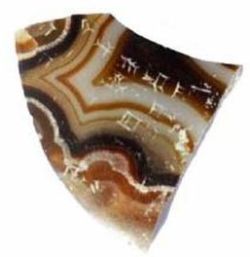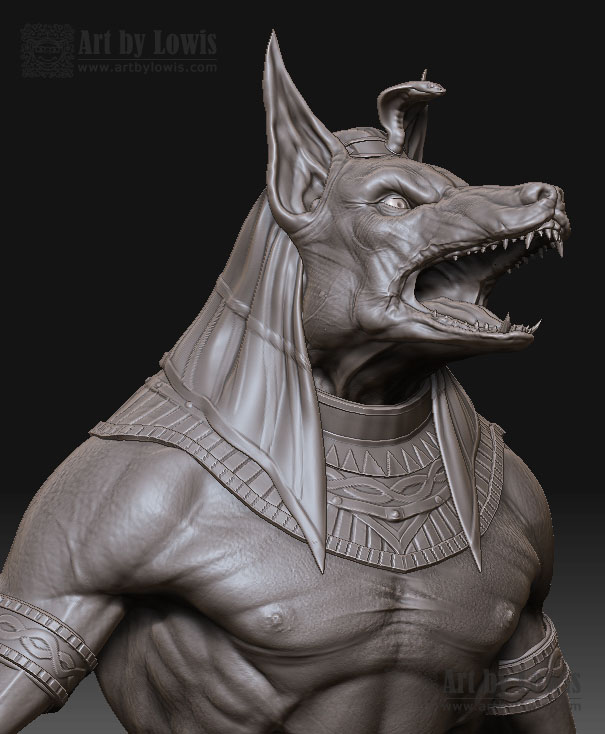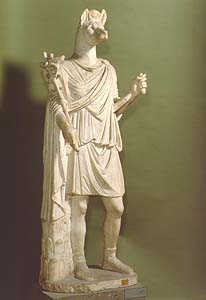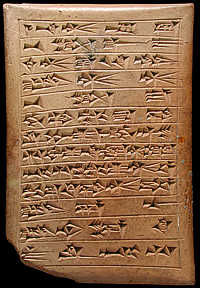It looks like you're using an Ad Blocker.
Please white-list or disable AboveTopSecret.com in your ad-blocking tool.
Thank you.
Some features of ATS will be disabled while you continue to use an ad-blocker.
share:
Originally posted by predator0187
Source
The discovery of a very small fragment of agate stone is causing excitement, as it has a 13th Century BCE cuneiform inscription. Not so surprising, you might think, for an artefact found in Mesopotamia, as the inscription shows that it was part of an object dedicated to the Mesopotamian moon god Sin. But this fragment was found in Malta!
An excavation is being conducted at the site of a megalithic temple, from the late Neolithic Age, in an area on Malta known as Tas-Silg, which is an ancient sanctuary site. The excavation team is lead by palaeontology professor Alberto Casella from the University of Rome (Italy). The main question is how such an article could have found its way so far west and to such a remote location.
One theory is that it may have been looted in a military campaign and then been passed through the hands of merchants and traders. Another theory centres around the high value which would have been placed on the object, which may suggest that the Tas-Silg sanctuary site may have had more significance than previously thought.
I just thought I would bring this to the attention of all you mystery/history buffs here.
I found this story to be quite impressive and as the story itself states, how an article could have found its way so far west. I just thought I would bring it here to get the opinions of some of the more informed people on this site.
Any thoughts?
Pred...
The moon-god Sin has another more modern name. Now he is called Allah. Archeaologists have found statues all over what was once called mesopotamia (modern day Arab held middle east) of him sitting on a throne with a crescent moon on his chest and a scepter in his right hand.
I'm gonna get flamed for telling the truth but there it is.
reply to post by lonewolf19792000
Makes perfect sense, same as how Christianity has basically bastardised other Pagan era cults - i would expect the same from Islam (and Judaism, Buddhism, etc).
Makes perfect sense, same as how Christianity has basically bastardised other Pagan era cults - i would expect the same from Islam (and Judaism, Buddhism, etc).
reply to post by St Udio
If that artifact as dedicated to Sin, and by the engraving i am sure it was, then that artifact may have well been a wall hanging piece for a home or maybe a temple and it more than likely was originally shaped like a crescent moon as the crescent moon is the symbol of Sin.
Sin has had different names. Sumerians called him sin but Babylonians and other pre-islamic pagan worshipping Arabs called him Hu'bal.
If that artifact as dedicated to Sin, and by the engraving i am sure it was, then that artifact may have well been a wall hanging piece for a home or maybe a temple and it more than likely was originally shaped like a crescent moon as the crescent moon is the symbol of Sin.
Sin has had different names. Sumerians called him sin but Babylonians and other pre-islamic pagan worshipping Arabs called him Hu'bal.
Originally posted by Flavian
reply to post by lonewolf19792000
Makes perfect sense, same as how Christianity has basically bastardised other Pagan era cults - i would expect the same from Islam (and Judaism, Buddhism, etc).
Christianity was based on Jesus with its roots originally in Judaism.
reply to post by lonewolf19792000
Without wanting to get into too much of an argument about it, christianity was based on an amalgamation of various sources, including Jesus and then turned into a "super religion". There many aspects of christianity, for example, that derive from Egyptian sun cults - including the holy trinity of the father, the sun and the 'holy spirit'.
However, back to the matter at hand. The Knights Hospitaller were based on Malta, as well as it's derivative into the 16th and 17th century. During this later spell, they used the island as a base for attacking the Barbary pirates of North Africa and the Ottoman Empire. They were also not above kidnapping ships full of christians and selling them to Barbary pirates in order to both raise funds for themselves and to further hatred of the Muslims. They were also involved in the trade in antiquities - as such you would expect Malta to be littered with remnants from all over the Middle East.
Without wanting to get into too much of an argument about it, christianity was based on an amalgamation of various sources, including Jesus and then turned into a "super religion". There many aspects of christianity, for example, that derive from Egyptian sun cults - including the holy trinity of the father, the sun and the 'holy spirit'.
However, back to the matter at hand. The Knights Hospitaller were based on Malta, as well as it's derivative into the 16th and 17th century. During this later spell, they used the island as a base for attacking the Barbary pirates of North Africa and the Ottoman Empire. They were also not above kidnapping ships full of christians and selling them to Barbary pirates in order to both raise funds for themselves and to further hatred of the Muslims. They were also involved in the trade in antiquities - as such you would expect Malta to be littered with remnants from all over the Middle East.
reply to post by Flavian
Ok fine, you know more than i obviously do about my own faith
The Roman Catholic Chruch's brand of Christianity is pagan worship, i am protestant and we rejected Apollo and Astarte The Queen of Heaven.
I'm not going any deeper into this so just drop it because trust me, we can do this all day.
Ok fine, you know more than i obviously do about my own faith
The Roman Catholic Chruch's brand of Christianity is pagan worship, i am protestant and we rejected Apollo and Astarte The Queen of Heaven.
I'm not going any deeper into this so just drop it because trust me, we can do this all day.
reply to post by lonewolf19792000
It was you that brought religion into it, not me! However, Protestant or Catholic, it is still Christianity which originally derives from the same sources - schisms come many centuries later.
And for the record, i am from the UK - we rejected Catholicism centuries ago mate.
It was you that brought religion into it, not me! However, Protestant or Catholic, it is still Christianity which originally derives from the same sources - schisms come many centuries later.
And for the record, i am from the UK - we rejected Catholicism centuries ago mate.
edit on 16-1-2012 by Flavian because: (no reason
given)
reply to post by predator0187
Unless I am mistaken, this bears a startling resemblance to Cuneiform...one of the very first types of organized writing.
Anyone else see this?
Unless I am mistaken, this bears a startling resemblance to Cuneiform...one of the very first types of organized writing.
Anyone else see this?
reply to post by Starchild23
Absolutely. However, it still doesn't necessarily point to this item being from Malta itself - simply that it was found there. For anyone that doesn't know or hasn't checked before, it is well worth looking at the history of Malta. It is one of the world's fascinating places for both good and bad reasons!
Absolutely. However, it still doesn't necessarily point to this item being from Malta itself - simply that it was found there. For anyone that doesn't know or hasn't checked before, it is well worth looking at the history of Malta. It is one of the world's fascinating places for both good and bad reasons!
Originally posted by Flavian
reply to post by Starchild23
Absolutely. However, it still doesn't necessarily point to this item being from Malta itself - simply that it was found there. For anyone that doesn't know or hasn't checked before, it is well worth looking at the history of Malta. It is one of the world's fascinating places for both good and bad reasons!
On top of that, trade and robbery means that it could have come from anywhere in the area. The problem is, we don't know what area it came from in the first place, only where it ended up. What we need is to find the translation...that would provide some clues as to its origins!
reply to post by Starchild23
I think the seabed around Malta is littered with thousands of artifacts that have also been "appropriated" (i love that word, covers so many sins!) from around the Middle and Near East and North Africa.
Sadly, i believe that an awful lot has probably also been destroyed in Malta over the years before it hit the wider world - things that may have implications for Islam, Christianity, etc.
I think the seabed around Malta is littered with thousands of artifacts that have also been "appropriated" (i love that word, covers so many sins!) from around the Middle and Near East and North Africa.
Sadly, i believe that an awful lot has probably also been destroyed in Malta over the years before it hit the wider world - things that may have implications for Islam, Christianity, etc.
Originally posted by MrsBlonde
I'm starting to think that Sumeria was a world wide culture....?
Hmmm, Sumeria wasn't a worldwide culture. But I think there was a worldwide culture that spawned Sumeria, and other ancient classical civilizations.
Clues point to a region in central Asia around the Black Sea where civilization began pre-Flood, and spread out radially from there. The writing on the Tataria Tablets resembles this new find.
Tataria Tablets
edit on 16-1-2012 by TheComte because: (no reason given)
I am sorry for they clay tablet being posted as a picture to accompany the article, where I initially saw the article was Signs Of The Times and that
was the picture they had associated with the article. Sorry that the picture doesn't match the story and it wasn't meant to be misleading,
My apologies,
Pred...
My apologies,
Pred...
The history here is amazing. I live in a house that is built into the bedrock and was a part of the fotrification of one of the three cities, about
400 years old. There is a room underneath the houe that has been dug out we haave found pots, bottles and there are doorways to other tunnels down
there. Malta is interconnected throughout with these tunnels.
I have not seen or heard of anything recently found but will have a check as the temples are not far. It would not surprise me that it did not originate from Malta as the trade, commerce and wars held here have been immense.
I have not seen or heard of anything recently found but will have a check as the temples are not far. It would not surprise me that it did not originate from Malta as the trade, commerce and wars held here have been immense.
There is nothing new in this . Just look at diferent ancient peoples. They ALL when travelling bought "souveniers" back from their travels. In fact
there was a flourishing business in early christian times for "relics". Imagine if the world was devastated today and in a thousand years time the
archaeologists dug into the Smithsonian. Would they then think Americans were dealing with the ancient Egyptian because they find a couple of mummies?
There's no telling where or when this artifact was picked up, so it's not so amazing to end up in Malta. I have in my posession a coin that was
minted in Antioch 2000 years ago yet it ended up being dug out of a water pipe trench in the middle of England. Amazing heh.

Malta was probably an outpost of ancient religious traditions well into relatively modern times. The cult of the Moon God "Sin" was probably surviving in this Maltese outpost. The artifact [above illustration] was probably used as a method by which to trap the spirit of the Moon God "Sin" via rituals and then the magi would then ask the trapped spirit of "Sin" to perform some kind of magic healing or cursing. For example the stones at Stonehenge in the British Isles were performing much the same magic. The pyramids in Egypt were no doubt performing a similar function too ? Such magic stones only have value to those who understand their paranormal function. The inscription on this humble piece of Agate [not a precious gem stone] is probably of no great significance, being just something scratched to assist the magi as to being able to remember what ritual the stone was used for. To the magi living in Malta at that time it is probable that cuneiform script was their secret cypher code. Known only to the magi initiated into the mysteries of their cult. Using such sacred codes [in this case cuneiform] is wide spread in such occult traditions. Ancient occult traditions did not go away, but rather adapted to the modern situation. For example here in the illustration we see the same Moon God "Sin" portayed in Egyptian form as "Anubis", or is it the Roman God "Mythras" ?


edit on 17-1-2012 by alien because: ...off topic spam removed..
Originally posted by Harte
This quote from the linked magazine page I found disconcerting:
The inscription was translated as a dedication to the Mesopotamian moon god Sin, the father of Ninurta who, for centuries, was the main deity worshiped far to the east in the city of Nippur in Mesopotamia. Nippur was considered a holy city and a pilgrimage site with a scribal school that generated literary texts.
Sin was not Ninurta's father. Sin was Shamash's father. Ninurta's father was Enlil, builder of the city mentioned in the quote (Nippur.)
Nippur has always been known as "Enlil's city." Sin has not so much to do with Nippur, though Ninurta, as the daughter of the city's holy founder, obviously would.
I don't think I'm wrong here. What kind of Archaeology rag makes errors like these (if they are errors - I'm not an expert.)
By the way, the city mentioned - the one built by Enlil - Nippur. It's called Nafar now and still is occupied.
Originally, it's name was Nibiru.
Harte
I apologise if this is off post, but I was fascinated by Nafar/Nippur/Nibiru.
Would you be able to point me in the direction of some online information about this place please? Especially relevant when it was originally called Nibiru.
Thank you for your time
Rainbows
Jane
Originally posted by angelchemuel
I apologise if this is off post, but I was fascinated by Nafar/Nippur/Nibiru.
Would you be able to point me in the direction of some online information about this place please? Especially relevant when it was originally called Nibiru.
Thank you for your time
Rainbows
Jane
Here's a quickie: From the ECSL
There's Nibiru (Nibru, Neberu) as Enlil's city.
Even wiki can tell you it's Nuffar:
Nippur (Sumerian: Nibru, often logographically recorded as 𒂗𒆤𒆠, EN.LÍLKI, "Enlil City;"[1] Akkadian: Nibbur) was one of the most ancient of all the Sumerian cities.[citation needed] It was the special seat of the worship of the Sumerian god Enlil, the "Lord Wind," ruler of the cosmos subject to An alone. Nippur was located in modern Nuffar in Afak, Al-Qādisiyyah Governorate, Iraq.
Wiki
When looking to make this connection, please keep in mind that the various spellings are all used for the word from Sumer. Obviously, they didn't use the Arabic characters that we employ, so every word is a transliteration. If you're searching, be prepared to search for many different spellings. Note that even the wiki quote above shows more than one.
In the ECSL link I gave, if you click on a highlighted word, it'll take you to the transliteration into the pronunciation from the time the tablet was written (in the case of the ECSL link, I believe it is Babylonian - like 1800 BC or so but I might be wrong.)
The Babylonians still used Sumerian writing then, even much later.
St. Udio asked about this timeline discrepancy earlier. We should keep in mind that the area is usually referred to as Sumer even though it was later Babylonian. I'm no expert, but that's probably because it was the written language they were using.
The script could easily be referred to as "Sumerian" even if a Babylonian wrote it.
Harte
new topics
-
Tesla Cybertruck Explodes in Front of Trump Hotel in Las Vegas
Mainstream News: 1 hours ago -
Maybe they didn't get away with it: The Lincoln-Kennedy assassination parallels. 7 sentences long.
History: 4 hours ago -
Ukraine halts transit of Russian gas to Europe after a prewar deal expired
Political Conspiracies: 8 hours ago -
Welp...Happy New Year!!
General Chit Chat: 10 hours ago -
Vehicle Strikes people in New Orleans
Mainstream News: 11 hours ago -
The Hand that Rocks the Cradle - Labour Plans “diversities of our society” Curriculum Change
Regional Politics: 11 hours ago
top topics
-
Vehicle Strikes people in New Orleans
Mainstream News: 11 hours ago, 22 flags -
Tesla Cybertruck Explodes in Front of Trump Hotel in Las Vegas
Mainstream News: 1 hours ago, 11 flags -
Ukraine halts transit of Russian gas to Europe after a prewar deal expired
Political Conspiracies: 8 hours ago, 9 flags -
Welp...Happy New Year!!
General Chit Chat: 10 hours ago, 7 flags -
The Hand that Rocks the Cradle - Labour Plans “diversities of our society” Curriculum Change
Regional Politics: 11 hours ago, 6 flags -
Maybe they didn't get away with it: The Lincoln-Kennedy assassination parallels. 7 sentences long.
History: 4 hours ago, 3 flags
active topics
-
Vehicle Strikes people in New Orleans
Mainstream News • 204 • : Flyingclaydisk -
Tesla Cybertruck Explodes in Front of Trump Hotel in Las Vegas
Mainstream News • 13 • : xuenchen -
Ukraine halts transit of Russian gas to Europe after a prewar deal expired
Political Conspiracies • 98 • : BedevereTheWise -
Happy New Year from Aussie
General Chit Chat • 23 • : bally001 -
Get Ready - Here comes the Bird Flu Pandemic - Millions are Notified
Diseases and Pandemics • 64 • : cherokeetroy -
Strange fog all over the northern hemisphere
General Conspiracies • 40 • : annonentity -
Maybe they didn't get away with it: The Lincoln-Kennedy assassination parallels. 7 sentences long.
History • 8 • : Dalamax -
-@TH3WH17ERABB17- -Q- ---TIME TO SHOW THE WORLD--- -Part- --44--
Dissecting Disinformation • 3878 • : xuenchen -
I dont understand what i just witnessed
Social Issues and Civil Unrest • 27 • : Oldcarpy2 -
Post A Funny (T&C Friendly) Pic Part IV: The LOL awakens!
General Chit Chat • 7976 • : underpass61

